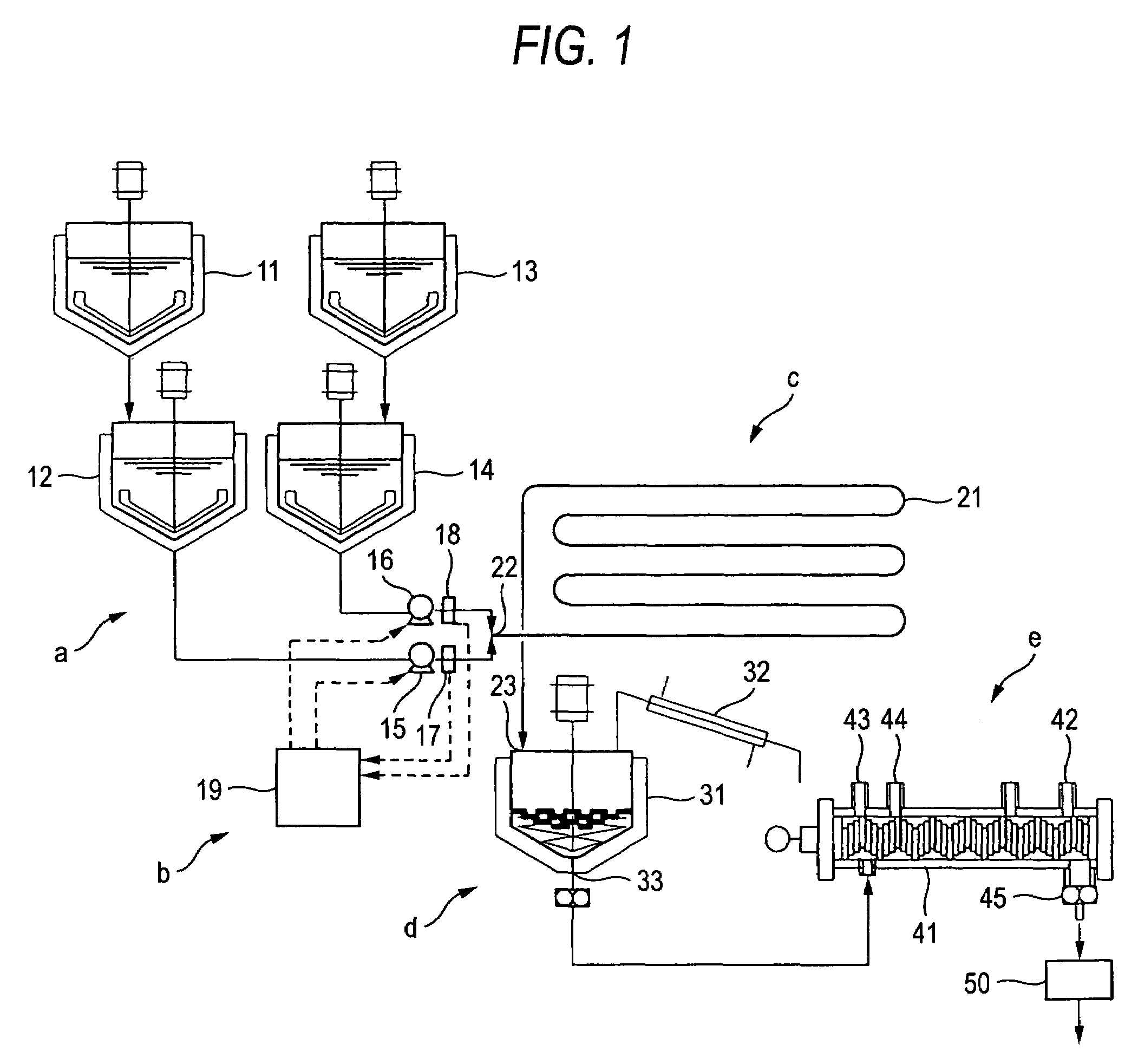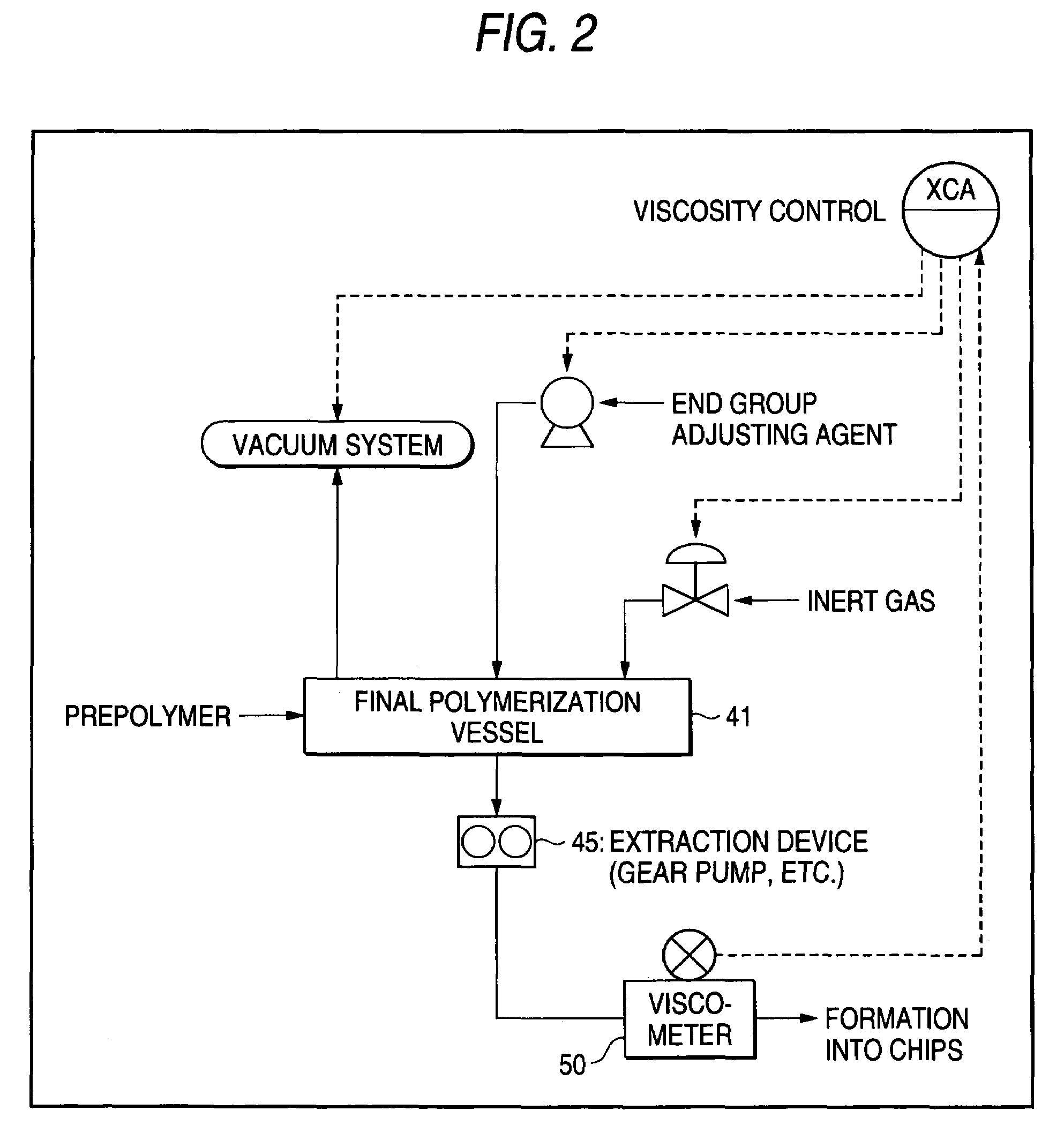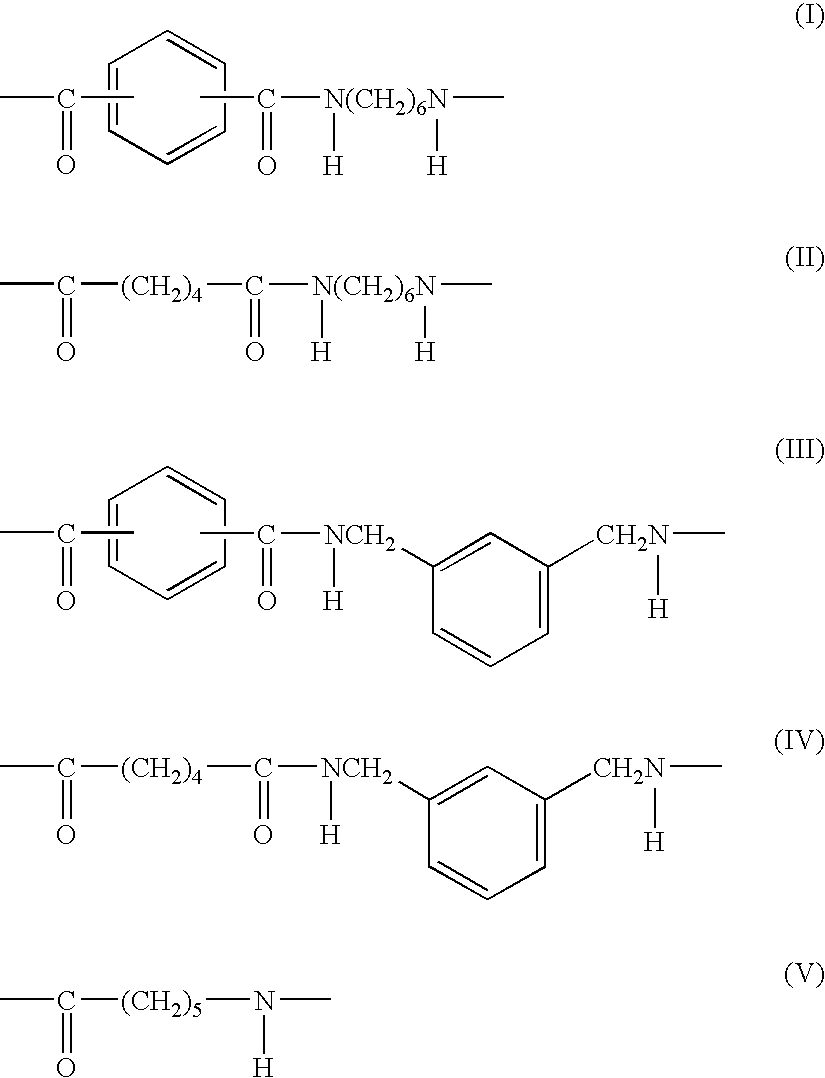Method for continuous production of polyamide
a production method and polyamide technology, applied in chemical/physical/physical-chemical stationary reactors, textiles and papermaking, chemical/physical processes, etc., can solve the problems of large dimensional change, excessive softness, small elastic modulus, etc., and achieve good quality, good quality, good quality
- Summary
- Abstract
- Description
- Claims
- Application Information
AI Technical Summary
Benefits of technology
Problems solved by technology
Method used
Image
Examples
example 1
[0184]A polyamide prepolymer ([RV]:1.61) mainly comprising adipic acid and m-xylylenediamine was supplied to reactor SCR conditioned to a reaction temperature of 255° C., an atmospheric pressure (no vacuum operation) and a screw rotation number of 50 rpm, thereby performing the final polymerization. Based on the indicated value of the melt viscometer, the purged amount with nitrogen gas (purity: 99.999% or more) was automatically controlled. with an average residence time of 10 minutes in SCR, a polyamide resin having an average [RV] value of 2.37 and a standard deviation [σ] of 0.02 was obtained. The average [RV] value and standard deviation [σ] were calculated from the results obtained by measuring 20 samples extracted at intervals of 10 minutes or more.
example 2
[0185]The same procedure as in Example 1 was preformed except for setting the vacuum degree in the reactor SCR to a fixed value of 865 hPa. The obtained polyamide resin had an average [RV] value of 2.38 and a standard deviation [σ] of 0.01.
example 3
[0186]A polyamide prepolymer ([RV]:1.65) mainly comprising adipic acid, m-xylylenediamine and terephthalic acid was supplied to reactor SCR conditioned to a temperature of 255° C., a vacuum degree of 860 hPa (fixed value), a nitrogen gas (purity: 99.999% or more) purged amount of 0.38 L / kg (fixed value) and a screw rotation number of 50 rpm, thereby performing the final polymerization. With passing of about 1.5 minutes after the addition of the prepolymer to SCR, hexahydrophthalic anhydride (HOPA) was added. The amount added of HOPA was automatically controlled based on the indicated value of the melt viscometer. With an average residence time of 10 minutes, a polyamide resin having an average [RV] value of 2.41 and a standard deviation [σ] of 0.02 was obtained.
PUM
| Property | Measurement | Unit |
|---|---|---|
| shear stress | aaaaa | aaaaa |
| temperature | aaaaa | aaaaa |
| yellow tinting | aaaaa | aaaaa |
Abstract
Description
Claims
Application Information
 Login to View More
Login to View More - R&D
- Intellectual Property
- Life Sciences
- Materials
- Tech Scout
- Unparalleled Data Quality
- Higher Quality Content
- 60% Fewer Hallucinations
Browse by: Latest US Patents, China's latest patents, Technical Efficacy Thesaurus, Application Domain, Technology Topic, Popular Technical Reports.
© 2025 PatSnap. All rights reserved.Legal|Privacy policy|Modern Slavery Act Transparency Statement|Sitemap|About US| Contact US: help@patsnap.com



